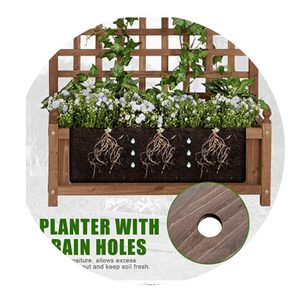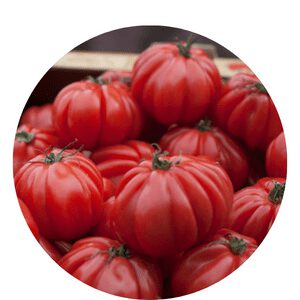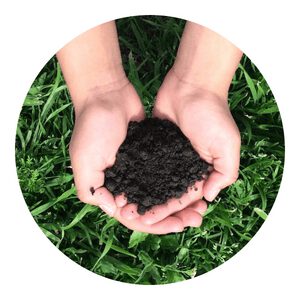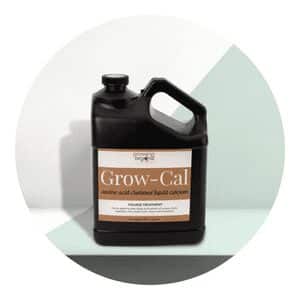Wood Plant climbing Trellis
Chappy the gardener has released a new guide on how to build a wood plant climbing trellis.
This guide provides step-by-step instructions on how to build a trellis that will support your climbing plants and help them reach new heights.
With this guide, you can create a beautiful and functional garden feature that will add interest and dimension to your yard.
Wood Climbing Trellis Menu
If you are looking for a way to add some vertical interest to your garden, consider installing a wood plant climbing trellis.
Trellises are easy to install and provide a great way to support plants while allowing them to grow tall and lush.
A trellis is a garden structure used to support climbing plants
When most people think of gardens, they think of flat green spaces with maybe a few bushes or flowers dotting the landscape.
But gardens can be so much more than that!
With a little creative planning, you can add structure and interest to your garden using items such as trellises.
A trellis is a garden structure used to support climbing plants. It is typically made of wood or metal and is either freestanding or attached to a wall or fence.
Trellises can be used to grow everything from ivy and morning glories to tomatoes and grapevines.
If you’re looking to add some interest to your garden, consider adding a trellis.
They are relatively inexpensive and can be found at most home improvement stores. And, best of all, they’re easy to install!
Types of trellises
Trellises are essential elements in any vegetable garden for providing support to climbing plants such as beans, peas, cucumbers, and tomatoes.
There are several types of trellises that you can choose from, each with its unique design and benefits.
Here are some of the most popular types of trellises used in vegetable gardens:
Teepee Trellis: A teepee trellis is a classic and simple design that consists of bamboo or wooden poles that are tied together at the top.
This type of trellis is easy to make and is great for growing pole beans and other vining plants.
Wall Trellis: A wall trellis is a permanent structure that is attached to a wall or fence.
This type of trellis is ideal for growing climbing plants, such as ivy, grapes, and roses, in small garden spaces.
Arch Trellis: An arch trellis is a decorative structure that can be used to add height and interest to a vegetable garden.
This type of trellis is perfect for climbing plants like clematis, wisteria, and jasmine.
A-Frame Trellis: An A-frame trellis is a simple design that consists of two vertical supports that are attached at the top, forming an “A” shape.
This type of trellis is ideal for growing climbing plants like tomatoes, cucumbers, and melons.
Fan Trellis: A fan trellis is a unique design that consists of several horizontal support wires that are attached to a central point, creating a fan-like shape.
This type of trellis is ideal for growing vining plants like peas and beans.
Ladder Trellis: A ladder trellis is a simple design that consists of two parallel horizontal supports that are attached to vertical posts.
This type of trellis is ideal for growing climbing plants like tomatoes and cucumbers.
Choosing the right trellis for your vegetable garden will depend on the type of climbing plant you want to grow, the available space in your garden, and your personal preferences.
Regardless of which type you choose, a trellis can add beauty, structure, and functionality to your vegetable garden.
Maximize Your Garden Space with the Perfect Trellis for Climbing Plants
Maximizing garden space is an important aspect of vegetable gardening, especially for those with limited outdoor space.
One way to achieve this is by utilizing trellises for climbing plants.
Trellises are a practical and aesthetically pleasing solution to saving space while also supporting your climbing plants.
With the right trellis, you can take your garden to new heights and enjoy an abundant harvest of vegetables like tomatoes, cucumbers, beans, and peas.
There are many different types of trellises to choose from, each with its own unique design and benefits.
For example, the wall trellis is a permanent structure that is attached to a wall or fence and is perfect for growing climbing plants in small garden spaces.
The teepee trellis is a classic and simple design that consists of bamboo or wooden poles that are tied together at the top and is great for growing pole beans and other vining plants.
The A-frame trellis, ladder trellis, arch trellis, and fan trellis are other options to consider.
When choosing a trellis for your garden, consider the type of climbing plant you want to grow, the available space in your garden, and your personal preferences.
For example, if you have limited space, a wall trellis or teepee trellis may be the best option, while a larger garden may benefit from a more elaborate structure like an arch trellis.
By utilizing trellises in your vegetable garden, you can not only save space, but also add beauty, structure, and functionality to your garden.
With the right trellis, you can grow a variety of climbing plants and enjoy an abundance of fresh vegetables right at your fingertips.
So go ahead and take your garden to new heights with the perfect trellis for climbing plants.
Positioning the trellis:
The best place to put a trellis is in an area that receives full sun exposure.
When positioning a trellis, it’s important to take into account the amount of sun exposure the area will get.
Trellises work best when they’re placed in an area that gets full sun exposure throughout the day.
If you’re not sure if an area receives full sun exposure, check with your local gardening center or online resources.
If you don’t have a spot in your yard that gets full sun exposure, there are a few other options.
You can place the trellis against a south-facing wall to take advantage of the sunlight, or use a landscaping fabric to create a “sun tunnel” and direct sunlight towards the trellis.
How to build a simple wood trellis:
Building a simple wood trellis for your vegetable garden is an easy and affordable way to provide support for climbing plants like tomatoes, cucumbers, beans, and peas.
With just a few basic materials and tools, you can create a functional and attractive trellis that will last for years.
Here’s how to build a simple wood trellis:
Materials:
- Two 1-inch by 2-inch wooden boards (the length will depend on the size of your trellis)
- Four 2-inch wood screws
- Measuring tape
- Drill
- Screwdriver bit
- Pencil
- Saw
Instructions:
Cut the wooden boards to the desired length. A typical trellis is about 6 feet tall and 2 feet wide, but you can adjust the size to fit your specific needs.
Hold one of the wooden boards vertically, and use a pencil to mark where the second board will be attached. Repeat this step on the opposite side.
Pre-drill holes at the marks you made in step 2, making sure the drill bit is slightly smaller than the screws you will be using.
Place the second board against the first, aligning the holes. Use the wood screws to attach the two boards together at the marks. Repeat this step for the other side of the trellis.
Stand the trellis upright and secure it in place by driving screws into the ground at the base of each side.
Your simple wood trellis is now complete and ready to be used in your vegetable garden. You can add additional supports or crosspieces if desired, to provide extra stability and strength.
By building a simple wood trellis, you can provide support for your climbing plants while also adding a touch of charm to your vegetable garden.
With its sturdy construction and classic design, this trellis will last for years and provide a reliable home for your climbing plants.
The Best Trellis Vegetables for Your Garden
Trellis vegetables are a great way to maximize your garden space and get the most out of your gardening efforts.
By growing climbing plants on a trellis, you can take advantage of vertical space and reduce the amount of ground space needed for your garden.
Trellis vegetables also offer a variety of benefits, including easier access for harvesting and improved air circulation to prevent disease.
So what are the best trellis vegetables for your garden?
Here are some of the top options:
Tomatoes: Trellised tomatoes have more air circulation, which helps prevent diseases and pests.
Plus, they are easier to harvest and won’t be lying on the ground, which can lead to rot.
Cucumbers: Cucumbers are classic climbing plants that do well on a trellis.
This can make it easier to keep them off the ground and prevent disease.
Peppers: Trellising peppers can help keep the fruit off the ground and prevent it from becoming diseased or pest-ridden.
Squash: Squash plants can grow quite large and sprawling, making trellising a great way to keep them contained and prevent them from taking up too much space in your garden.
Pole Beans: Pole beans are a great choice for a trellis vegetable garden because they grow vertically and produce a lot of beans.
Peas: Trellising peas can help them stay off the ground, making it easier to pick the pods and keep them clean.
Melons: Trellising melons can help keep the fruit off the ground, reducing the risk of rot and disease.
These are just a few of the best trellis vegetables for your garden.
When choosing trellis vegetables, consider the amount of space you have, the climate in your area, and your personal preferences.
With the right trellis and vegetables, you can create a thriving and productive vegetable garden that will provide you with fresh produce for years to come.
What wood is best for trellis?
When it comes to choosing the right wood for a trellis, there are a few things you need to keep in mind.
The most important factors are the climate and the type of plants you’ll be growing.
The best woods for trellises in cold climates are cedar, cypress, and redwood.
These woods are naturally resistant to decay and insects, so they will last for many years even if they’re exposed to the elements.
In warm climates, pine is a good choice for trellises because it’s lightweight and easy to work with.
Whatever type of wood you choose, make sure that it’s untreated and unvarnished.
Treated wood may be resistant to decay and insects, but it can also release harmful chemicals into the soil.
What is the easiest climbing plant to grow?
When it comes to easy climbing plants, the Virginia creeper vine is definitely one of the best.
This plant is known for its ability to quickly attach itself to surfaces using small tendrils that grow out from its stems, and it can thrive in a wide variety of climates.
Virginia creeper also requires very little care and maintenance, making it a great choice for homeowners who don’t have a lot of time to spend on gardening.
How long will a wood trellis last?
A wood trellis is a great way to add some structure to your garden and can last for many years with proper care.
Trellises can be made from a variety of materials, but wood is often the most popular option because it is durable and easy to work with.
If you are looking for a long-lasting trellis, there are a few things you can do to ensure its longevity.
The first step is to choose the right type of wood. Treated lumber is a good option if you want your trellis to last for many years, as it is resistant to rot and decay.
Untreated wood will also last for several years, but it is important to seal it properly against the elements to protect it from moisture and pests.
Once you have chosen the right type of wood, it is important to build your trellis correctly.
Which is better wood or metal trellis?
When it comes to garden trellises, there are two main types: wood and metal.
Both have their pros and cons, so which is the best for your garden?
Wooden trellises are often more affordable than metal ones, and they can be easier to work with since they’re usually made of lightweight materials.
They’re also a good option if you want to create a rustic or cottage-garden look in your yard.
However, wooden trellises can rot if they’re not treated properly or if they’re exposed to moisture and humidity, so you’ll need to make sure you keep them well-maintained.
Metal trellises are more durable than wood ones, and they won’t rot or warp in bad weather.
They also come in a wider variety of shapes and sizes, making them a good choice for larger gardens.
In conclusion, a trellis is a great way to add structure to your garden and can be used to support wood plants.
When choosing a trellis, be sure to select one that is the correct size for your plants. If you have any questions, please feel free to ask in the comments below.
Click To Grow
Helps Us Grow – Share If You Like
















